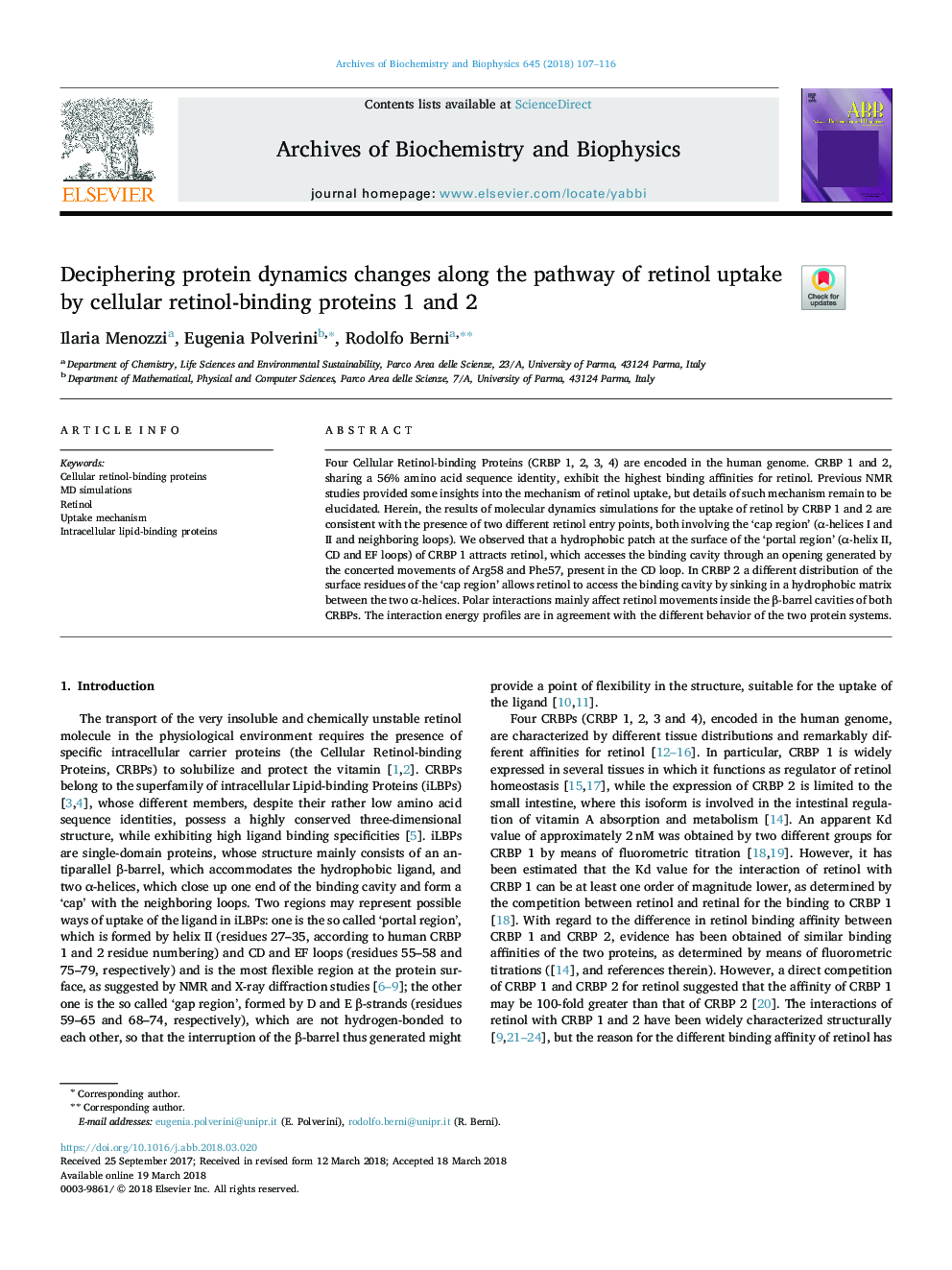| Article ID | Journal | Published Year | Pages | File Type |
|---|---|---|---|---|
| 8288653 | Archives of Biochemistry and Biophysics | 2018 | 10 Pages |
Abstract
Four Cellular Retinol-binding Proteins (CRBP 1, 2, 3, 4) are encoded in the human genome. CRBP 1 and 2, sharing a 56% amino acid sequence identity, exhibit the highest binding affinities for retinol. Previous NMR studies provided some insights into the mechanism of retinol uptake, but details of such mechanism remain to be elucidated. Herein, the results of molecular dynamics simulations for the uptake of retinol by CRBP 1 and 2 are consistent with the presence of two different retinol entry points, both involving the 'cap region' (α-helices I and II and neighboring loops). We observed that a hydrophobic patch at the surface of the 'portal region' (α-helix II, CD and EF loops) of CRBP 1 attracts retinol, which accesses the binding cavity through an opening generated by the concerted movements of Arg58 and Phe57, present in the CD loop. In CRBP 2 a different distribution of the surface residues of the 'cap region' allows retinol to access the binding cavity by sinking in a hydrophobic matrix between the two α-helices. Polar interactions mainly affect retinol movements inside the β-barrel cavities of both CRBPs. The interaction energy profiles are in agreement with the different behavior of the two protein systems.
Related Topics
Life Sciences
Biochemistry, Genetics and Molecular Biology
Biochemistry
Authors
Ilaria Menozzi, Eugenia Polverini, Rodolfo Berni,
